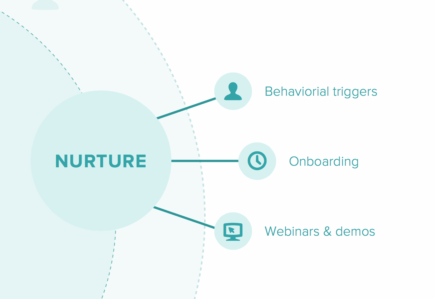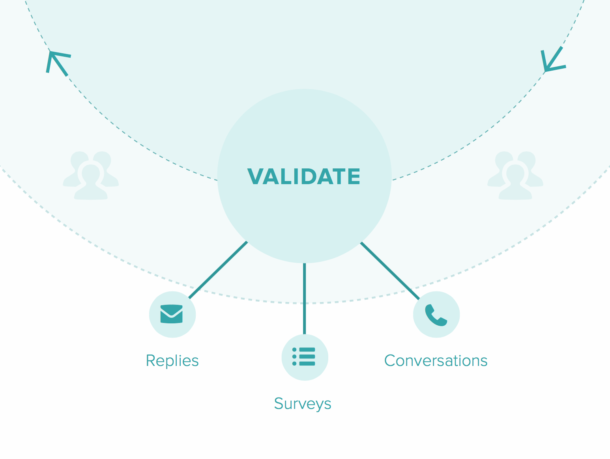There are many opinions on how to define “customer success”. I come from the school of thought that this means the success of your customers. Not the success of your company, not a sales team focused on renewals and upsells. Not even customer support, which is reactive and should be a last resort.
When you aim for true customer success, you’re pouring yourself into making more skillful, educated users.
To paraphrase Kathy Sierra:
We’re not trying to make our customers be better Beanstalk users, we’re trying to make them better developers.
Customer success is about a subtle shift from focusing on making excellent products to making excellent users. And it’s a mindset everyone on your team should have.
In the long run, if you focus on making excellent users, your company will benefit. And everyone can feel great about it!
What Customer Success Looks Like, Day to Day
The following graphic is an illustration of Customer Success as a function of your business.

There are 3 main activities that drive the team members who focus on customer success (a close relative to product management):
Research, nurturing, and validation.
Research
This is where you dig in to the data. You review the activity of your users. Where’s the churn, the drop off points? What is the path to attrition? What are people complaining about in support? What does the path of a successful customer look like? How can you help more people find that path?

A person can fall into the trap of analysis paralysis and research endlessly. But a healthy Customer Success team should spend a hefty portion of their time digging in to understand customer's needs and behaviors.
Nurture
It’s a bit of a cheesy term, but nurturing is the activity you take to help your customers get better at what they do. A lot of us are parents, so I hope the term makes sense. We care about our children and we do everything we can to equip them to have a long, happy life. They’ll also piss you off at times, but that doesn’t mean you stop caring about their success. :)
It can be the same with our customers.

Nurturing can be a lot of things. Onboarding emails and welcome messages. Behavioral triggers that get them the right information at the right time. Educational materials that help them learn. It also means just talking to them and hearing what they have to say.
Validation
Of course, you need to take time to evaluate whether your assumptions from your research were accurate. Was your nurturing activity and content successful in solving problems or meeting the needs of your customer?

The activity here is a lot like research. But it’s a slightly different focus and can involve a lot of conversation. Each email you send during onboarding or with behavioral email can result in a reply. Validation involves reviewing the activity data, nurturing results, and talking to the customers.
A Couple of Side Notes
The chart here includes a couple of other items …
- It’s cyclical (hence the arrows): there’s no end to this stuff! If you start with an assumption from your research, then move to creating a plan to nurture & educate, you eventually validate your assumption (which is just research with a different focus). From there, you start over again … you improve the current plan if you can, or move on to another improvement, another initiative, another pain point. It can always be better!
- Content is crucial: it’s the background to all your success initiatives. Whether you’re creating onboarding emails, targeted campaigns, blog posts, or educational guides, you’re creating content to help better equip your customers (and potential customers).
- The feedback loop: the outer circle here with the people represents the rest of the team. Whatever the success/support staff are doing, they’re the ones most often in contact with the customer. They know the pain points, where your product or service is not meeting a need. Every initiative, day to day support, should involve consistent updates to the rest of the team.
Whatever your product or service, you’ll do well when you focus on your customers. Again, when you empower people through knowledge and tools, your own success is an inevitable byproduct. And we can all feel good about making other people’s lives better.
How does your company approach this subject? Let us know — we’d love to hear about it!

